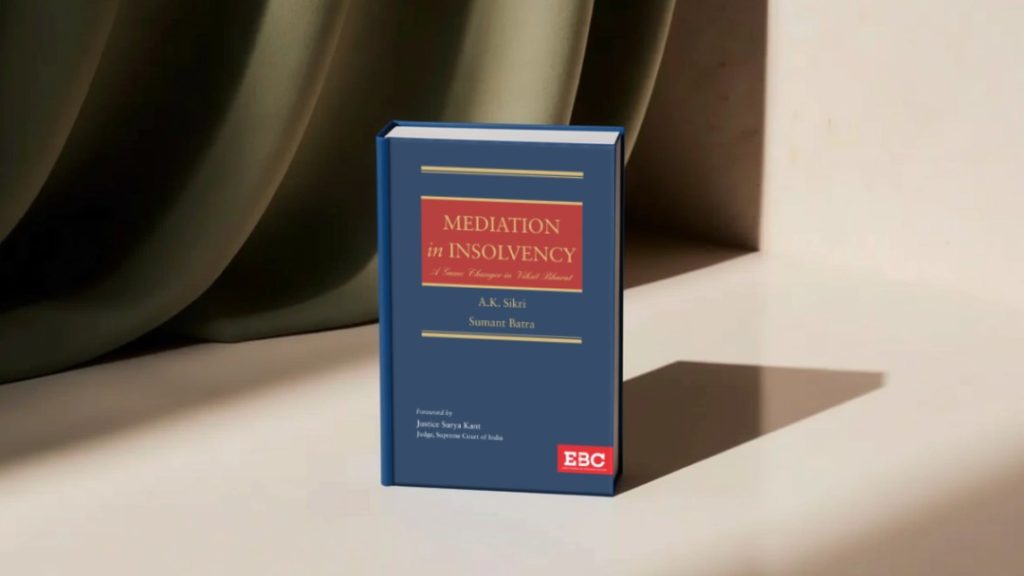
In today’s fast-changing business world, insolvency is no longer just a matter of courts and liquidators. Instead, increasingly, the idea of mediation is entering the frame. So, in this edition of our insolvency explainer, we will explore how mediation can play a meaningful role in insolvency proceedings, what the legal framework in India says, and why this matters for debtors, creditors and practitioners alike.
What is Mediation and Why Bother?
First and foremost, mediation is a structured process in which a neutral third‐party (the mediator) helps disputing parties reach an amicable settlement. Instead of purely adversarial litigation, mediation emphasises cooperation, dialogue and custom-designed solutions.
Consequently, it offers certain advantages: for example, it can help preserve business relationships, maintain confidentiality, and reduce cost and time compared to protracted litigation. Importantly though, it must align with the overarching legal regime—especially when we’re dealing with insolvency.
The Insolvency Framework in India – A Quick Recap
Before we delve into mediation, let’s briefly recall the key legal backbone for insolvency in India:
- The Insolvency and Bankruptcy Code, 2016 (“IBC”) is the central statute governing insolvency and bankruptcy of corporate persons in India.
- Under Section 12 of the IBC, the corporate insolvency resolution process (“CIRP”) must ordinarily be completed within 180 days from the date of admission of the application (extendable by 90 days, and further in some cases).
- The code seeks to maximise value of assets of the corporate debtor, promote entrepreneurship, and balance interests of all stakeholders.
- There are separate provisions for operational creditors (Section 9), financial creditors (Section 7) and so on.
Thus, when we speak about mediation in insolvency, it must not compromise these core objectives or timelines.
Why Introduce Mediation in Insolvency?
Because, despite the IBC’s framework, practical challenges remain. For example: delays in resolution, large caseloads before the National Company Law Tribunal (NCLT), disputes between debtors and creditors dragging on, and value erosion of the business.
Therefore, mediation can act as a complementary mechanism. According to a recent expert committee of the Insolvency and Bankruptcy Board of India (IBBI), mediation under the insolvency framework could help expedite resolution and enhance efficiency.
For instance, the Committee’s “Framework for Use of Mediation under the IBC” emphasises that a voluntary mediation process could run parallel to the CIRP, without delaying it, and maintain sanctity of timelines.
What Does the Law Say About Mediation in Insolvency?
Here’s a breakdown of relevant laws and proposals:
The Mediation Act, 2023
- The Mediation Act, 2023 sets out a general statutory scheme for mediation of commercial (and other) disputes in India.
- However, the applicability of the 2023 Act to insolvency proceedings under the IBC is not automatic. The expert committee noted that insolvency matters may fall outside the “commercial dispute” definition under the Act.
IBC & Mediation
- Recently, IBBI has proposed that operational creditors (OCs) may opt for mediation before filing an application under Section 9 of the IBC
- At present the IBC does not explicitly provide for mediation of insolvency proceedings.
- The IBBI expert committee envisages mediation as a voluntary parallel process.
- In its recommendations, the committee suggests establishing a dedicated mediation cell attached to NCLT, maintaining independence, and ensuring the mediation does not bypass the waterfall mechanism and statutory timelines.
When (And Where) Can Mediation Fit Into the Insolvency Process?
Given the above, mediation can be integrated at several junctures:
- Pre-institution stage: particularly for disputes between operational creditors and the corporate debtor, mediation can be used before a formal insolvency application is filed under Section 9.
- Early in CIRP: while the corporate debtor’s resolution process is ongoing, mediation may help resolve creditor-debtor conflicts, disputed claims, or restructuring issues.
- Parallel with liquidation or resolution plan approval: though more complex, mediation might still assist in facilitating settlement among stakeholders.
Nevertheless, the committee emphasises that not all matters are fit for mediation. For example, avoidance transactions (fraudulent transfers) are excluded.
What Are the Benefits – And the Cautions?
Benefits
- Firstly, mediation can accelerate resolution. Studies show that many Section 9 cases or other insolvency petitions get settled or withdrawn before formal admission.
- Secondly, it can reduce costs for parties and the tribunal, lighten the burden on NCLT, and preserve asset value of the corporate debtor.
- Thirdly, because mediation is less adversarial, it can preserve ongoing business relationships or facilitate restructuring rather than immediate liquidation.
Cautions
- However, mediation must not compromise the statutory timelines or priorities under the IBC (for example the creditor-waterfall or stakeholder rights). The committee pointed out that any mediated settlement must respect the waterfall mechanism.
- Also, the framework for mediation under insolvency is still evolving. As things stand, its legal status is not fully settled.
- And finally, mediation is voluntary; therefore, its success depends on the will of parties, the choice of mediator, and the structure of the process.
What Should Practitioners & Stakeholders Keep in Mind?
- If you are a creditor (especially operational creditor), consider whether mediation before filing might help you achieve quicker settlement rather than immediate litigation under Section 9.
- If you are a corporate debtor, mediation might assist you keep control, preserve value and seek a more amicable resolution.
- If you are a mediator or insolvency professional, understand the interplay between IBC timelines, stakeholder rights and the proposed mediation framework.
- Always ensure any mediated settlement complies with IBC’s ripple effects, including maintaining rights of third parties and ensuring no prejudice to priority or public interest.
- Keep watching the regulatory developments: the IBBI and other bodies are working on tailored mediation rules under IBC.
The Road Ahead
In summary, mediation in insolvency processes presents a promising next step in India’s insolvency evolution. While the IBC remains the foundational statute, mediation offers a complementary pathway that emphasises speed, collaboration and value preservation.
As the regulatory regime matures—for example through dedicated mediation cells, specialist mediators, and customised frameworks—mediation may become a mainstream feature of the insolvency landscape. Meanwhile, keeping one eye on timelines, statutory mandates and stakeholder rights will ensure you remain prepared.
Ultimately, the role of mediation in insolvency proceedings is not about replacing the IBC. Rather, it is about enhancing the resolution ecosystem: making it more efficient, less adversarial and more attuned to value-maximisation. For practitioners, businesses and creditors alike, mediation offers a modern lens through which to view insolvency—not just as an endgame, but as an opportunity for structured, consensual resolution.
To dive deeper into the evolving role of mediation in India’s insolvency landscape, explore Mediation in Insolvency: A Game Changer in Viksit Bharat by Justice A.K. Sikri and Sumant Batra, available on EBC Webstore.
















